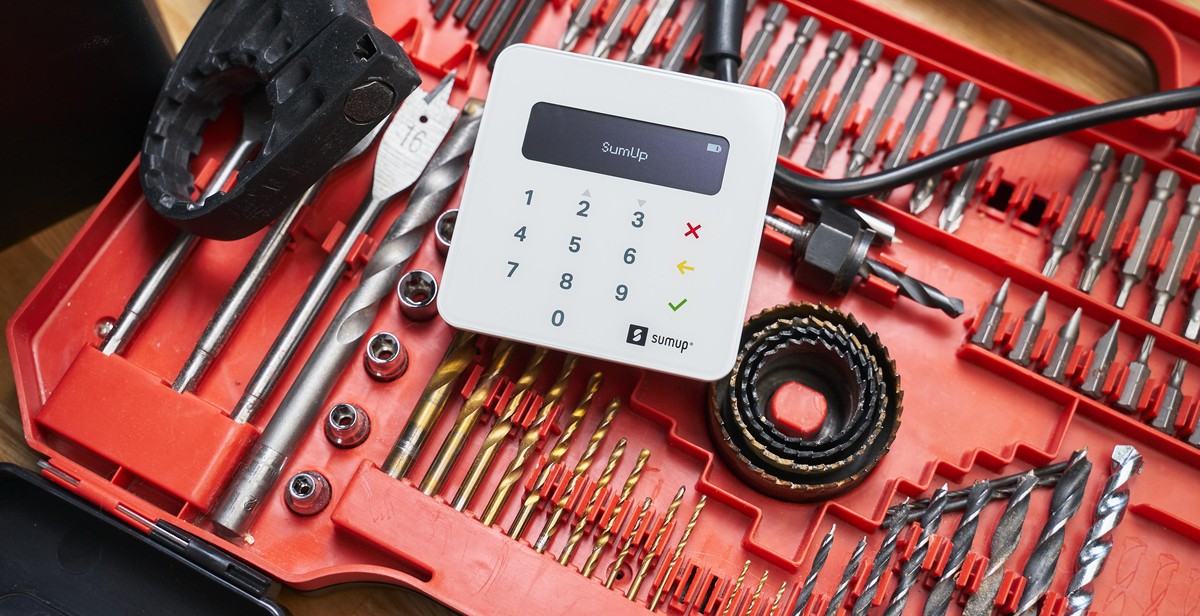How to Start a Small Logistics Business: Steps for Success
Logistics is an essential aspect of any business that involves the movement of goods or products from one location to another. Starting a small logistics business can be a lucrative venture, but it requires careful planning and execution. In this article, we will discuss the steps you need to take to start a small logistics business and achieve success.
Step 1: Conduct Market Research
The first step in starting any business is to conduct market research. This involves identifying your target market, understanding the competition, and determining the viability of your business idea. You can use online resources, industry reports, and surveys to gather information about the logistics industry and your potential customers.
Step 2: Create a Business Plan
A well-written business plan is essential for the success of any business. It outlines your goals, strategies, and financial projections. Your business plan should include details about your services, target market, marketing strategies, and financial projections.
Step 3: Register Your Business
Once you have a solid business plan in place, it’s time to register your business. This involves choosing a business name, registering with the appropriate government agencies, and obtaining necessary licenses and permits.
Step 4: Secure Funding
Starting a small logistics business requires funding for equipment, vehicles, and other operational expenses. You can secure funding through loans, grants, or by seeking investors.
Step 5: Build Your Team
As your business grows, you’ll need to hire a team of employees to help you manage operations. This includes drivers, dispatchers, and administrative staff.
By following these steps, you can start a small logistics business and achieve success in the industry.

Step 1: Conduct Market Research
Starting a small logistics business can be a challenging task, but conducting thorough market research can help you identify your target market and analyze your competitors. This step is crucial in determining the feasibility of your business and creating a solid foundation for success.
Identify Your Target Market
The first step in conducting market research is identifying your target market. This involves understanding the needs and preferences of your potential customers and determining the demand for your logistics services.
You can start by analyzing the demographics of your target market, including their age, gender, income, and location. You should also consider the type of goods they need to transport, their preferred modes of transportation, and their budget constraints.
Once you have identified your target market, you can tailor your marketing efforts to reach them effectively. This may involve creating targeted advertising campaigns, developing personalized messaging, and building relationships with potential customers.
Analyze Your Competitors
Another critical aspect of market research is analyzing your competitors. This involves identifying other logistics companies in your target market and evaluating their strengths and weaknesses.
You can start by researching your competitors’ pricing strategies, service offerings, and customer satisfaction levels. This can help you identify opportunities to differentiate your business and provide unique value to your customers.
You should also consider the size and reputation of your competitors, as well as their marketing and branding strategies. This can help you identify potential threats to your business and develop a strategy to overcome them.
| Competitor Name | Strengths | Weaknesses | Opportunities | Threats |
|---|---|---|---|---|
| Company A | Wide service coverage | Higher pricing | Opportunity to offer more competitive pricing | Threat of losing customers to lower-priced competitors |
| Company B | Strong brand reputation | Limited service offerings | Opportunity to expand service offerings | Threat of losing customers to companies with more comprehensive services |
| Company C | Excellent customer service | Smaller service coverage | Opportunity to expand service coverage | Threat of losing customers to companies with wider service coverage |
By conducting thorough market research and analyzing your target market and competitors, you can develop a comprehensive understanding of the logistics industry and position your business for success.

Step 2: Develop a Business Plan
Developing a business plan is crucial to the success of your small logistics business. It helps you define your business goals, target market, competitive landscape, and financial projections. A well-written business plan is also essential for securing funding from investors or lenders.
Executive Summary
The executive summary should provide a brief overview of your business plan. It should summarize your company’s mission, products or services, target market, competitive landscape, and financial projections. Keep it concise and to the point, as investors or lenders may not have time to read through lengthy documents.
Company Description
The company description should provide an in-depth look at your small logistics business. It should include information about your company’s history, mission statement, legal structure, management team, and employees. You should also describe your products or services and how they will meet the needs of your target market.
Market Analysis
The market analysis should provide an overview of the logistics industry and your target market. It should include information on industry trends, competitive landscape, and customer demographics. You should also analyze your competitors and identify their strengths and weaknesses.
Service or Product Line
The service or product line section should describe your logistics services or products in detail. You should explain how they will meet the needs of your target market and differentiate your business from competitors. You should also include information on pricing, delivery, and customer service.
Marketing and Sales
The marketing and sales section should describe how you plan to promote and sell your logistics services or products. You should identify your target market and outline your marketing strategies, such as advertising, social media, and email marketing. You should also describe your sales process and how you will convert leads into customers.
Financial Projections
The financial projections should provide an overview of your small logistics business’s expected revenue and expenses. You should include a profit and loss statement, cash flow statement, and balance sheet. You should also include a break-even analysis and a description of your funding needs.
Appendix
The appendix should include any additional information that supports your business plan, such as market research data, resumes of key employees, and legal documents. It should also include any relevant charts, graphs, or tables.
| Section | Content |
|---|---|
| Executive Summary | Brief overview of business plan |
| Company Description | Company history, mission statement, legal structure, management team, and employees |
| Market Analysis | Industry trends, competitive landscape, customer demographics, and competitor analysis |
| Service or Product Line | Logistics services or products, pricing, delivery, and customer service |
| Marketing and Sales | Target market, marketing strategies, and sales process |
| Financial Projections | Profit and loss statement, cash flow statement, balance sheet, break-even analysis, and funding needs |
| Appendix | Market research data, resumes, legal documents, and relevant charts, graphs, or tables |

Step 3: Register Your Business
Once you have decided on your business structure, the next step is to register your business. Registering your business is essential for establishing your business as a legal entity and getting the necessary licenses and permits to operate.
Choose Your Business Structure
Before you can register your business, you need to choose your business structure. There are several types of business structures, including:
- Sole Proprietorship: This is the simplest and most common type of business structure. It is owned and operated by one person, who is personally liable for all the business’s debts and obligations.
- Partnership: This is a business structure in which two or more people share ownership and responsibility for the business.
- Limited Liability Company (LLC): This is a hybrid business structure that combines the liability protection of a corporation with the tax benefits of a partnership.
- Corporation: This is a legal entity that is separate from its owners. It provides the most protection from personal liability but is also the most complex and expensive to set up.
Each business structure has its advantages and disadvantages, so it’s important to choose the one that best fits your needs.
Register Your Business
Once you have chosen your business structure, you need to register your business with the appropriate government agencies. The requirements for registration vary depending on your location and business structure, but generally, you will need to:
- Choose a business name and make sure it is available
- Register your business with the state
- Apply for a tax identification number
- Obtain any necessary licenses and permits
To register your business with the state, you will need to file the appropriate paperwork and pay a fee. You may also need to publish a notice of your intent to form a business in a local newspaper.
Once you have registered your business, you can apply for a tax identification number from the IRS. This number is used to identify your business for tax purposes.
Finally, you will need to obtain any necessary licenses and permits to operate your business. The requirements for licenses and permits vary depending on your location and the type of business you are starting.
| License/Permit | Description |
|---|---|
| Business License | A general license that allows you to operate a business in your city or county |
| State License | A license required by the state for certain types of businesses, such as transportation or hazardous materials |
| Federal License | A license required by the federal government for certain types of businesses, such as those that operate in the aviation or maritime industries |
| Permits | Special permits required for certain types of activities, such as transporting hazardous materials or operating a vehicle over a certain weight limit |
It’s important to research the requirements for licenses and permits in your area and apply for them as soon as possible to avoid any delays in starting your business.
Registering your business can be a complex process, but it’s an essential step in starting a small logistics business. By choosing the right business structure and obtaining the necessary licenses and permits, you can establish your business as a legal entity and start operating with confidence.

Step 4: Obtain Necessary Licenses and Permits
Before you can start your small logistics business, you need to obtain the necessary licenses and permits. These licenses and permits are required by law and failure to obtain them can result in fines, penalties, and even the closure of your business.
Federal Licenses and Permits
Depending on the nature of your business, you may need to obtain federal licenses and permits. Some of the common federal licenses and permits required for logistics businesses include:
- Freight Broker Authority: If you plan to act as a freight broker, you will need to obtain a freight broker authority from the Federal Motor Carrier Safety Administration (FMCSA). This license is required for businesses that arrange for the transportation of goods by motor carrier.
- Motor Carrier Authority: If you plan to operate your own trucks, you will need to obtain a motor carrier authority from the FMCSA. This license is required for businesses that transport goods by motor carrier.
- International Registration Plan (IRP) and International Fuel Tax Agreement (IFTA) Permits: If you plan to operate your trucks across state lines, you will need to obtain IRP and IFTA permits. These permits allow you to register your vehicles and pay fuel taxes in all the states you operate in.
State and Local Licenses and Permits
In addition to federal licenses and permits, you will also need to obtain state and local licenses and permits. The requirements for these licenses and permits vary depending on your location and the nature of your business. Some of the common state and local licenses and permits required for logistics businesses include:
- Business License: Most states require businesses to obtain a business license. This license allows you to operate your business in the state and pay taxes.
- Commercial Driver’s License (CDL): If you plan to operate your own trucks, you will need to obtain a CDL. This license is required for drivers of commercial motor vehicles (CMVs).
- Vehicle Registration and Insurance: You will need to register your vehicles with your state’s department of motor vehicles (DMV) and obtain commercial auto insurance.
- Warehouse License: If you plan to operate a warehouse, you may need to obtain a warehouse license from your local government.
Conclusion
Obtaining the necessary licenses and permits is a critical step in starting a small logistics business. It is important to research the requirements in your area and ensure that you are in compliance with all federal, state, and local laws and regulations.
Step 5: Secure Funding
Starting a small logistics business can be capital-intensive, and it is important to have a solid financial plan in place before launching your venture. In this section, we will discuss how to determine your funding needs and explore your funding options.
Determine Your Funding Needs
The first step in securing funding for your logistics business is to determine your funding needs. This involves calculating the total amount of money you will need to start and operate your business. Some of the expenses you will need to consider include:
- Equipment and technology
- Office space and utilities
- Inventory and supplies
- Employee salaries and benefits
- Marketing and advertising
- Legal and accounting fees
Once you have a clear understanding of your funding needs, you can begin to explore your funding options.
Explore Your Funding Options
There are several funding options available for small business owners, including:
- Bootstrapping: This involves funding your business with your own personal savings or by borrowing money from friends and family. While this can be a low-cost option, it can also be risky if your business does not generate enough revenue to pay back the loans.
- Small Business Loans: You can apply for a loan from a bank or credit union to fund your logistics business. These loans typically require collateral and a strong credit score, but they can provide you with the capital you need to get started.
- Grants: There are several government and private organizations that offer grants to small businesses. These grants do not need to be repaid, but the application process can be competitive and time-consuming.
- Angel Investors: Angel investors are wealthy individuals who invest in small businesses in exchange for equity. This can be a good option if you are looking for a larger amount of capital and are willing to give up some control of your business.
- Venture Capitalists: Venture capitalists are firms that invest in high-growth startups in exchange for equity. This can be a good option if you have a scalable business model and are looking to grow quickly.
When exploring your funding options, it is important to consider the terms and conditions of each option and choose the one that best fits your business needs.
| Funding Option | Pros | Cons |
|---|---|---|
| Bootstrapping | Low-cost option | High risk |
| Small Business Loans | Relatively low interest rates | Requires collateral and a strong credit score |
| Grants | Do not need to be repaid | Competitive application process |
| Angel Investors | Can provide a larger amount of capital | May require giving up some control of your business |
| Venture Capitalists | Can provide a large amount of capital | May require giving up a significant amount of equity |
By carefully considering your funding needs and exploring your funding options, you can secure the capital you need to start and grow your small logistics business.

Step 6: Set Up Your Business Operations
Once you have established your business plan and obtained the necessary permits and licenses, it is time to set up your business operations. This step involves choosing a location, purchasing equipment and vehicles, and hiring employees.
Choose a Location
Choosing the right location for your logistics business is crucial for its success. Consider factors such as accessibility, proximity to major highways, airports, and seaports, and availability of warehouse and storage space.
Ensure that the location is easily accessible for your customers and employees. Also, consider the zoning laws and regulations in the area to ensure that your business is compliant.
Purchase Equipment and Vehicles
Your logistics business will require equipment and vehicles to transport goods and manage operations. Purchase or lease vehicles that are suitable for your business needs and budget.
Consider the type of goods you will be transporting and the distance you will be covering. Ensure that the vehicles are well-maintained and meet safety standards and regulations.
In addition to vehicles, you will need equipment such as pallet jacks, forklifts, and loading docks. Purchase or lease equipment that is appropriate for your business operations.
Hire Employees
Your logistics business will require a team of skilled and dedicated employees to manage operations and ensure customer satisfaction. Hire employees who are experienced in logistics and transportation.
Consider the job roles you will need to fill, such as drivers, dispatchers, warehouse workers, and administrative staff. Develop job descriptions and qualifications for each role and conduct interviews to select the best candidates.
Ensure that your employees receive proper training and are familiar with safety protocols and regulations. Also, establish clear communication channels and performance metrics to ensure that your team is working efficiently and effectively.
By following these steps and setting up your business operations, you will be well on your way to starting a successful logistics business.

Step 7: Develop a Marketing Strategy
Developing a marketing strategy is crucial for any small logistics business to succeed. It helps to define your brand, reach your target audience, and differentiate yourself from your competitors. Here are some steps to develop a successful marketing strategy:
Define Your Brand
The first step in developing a marketing strategy is to define your brand. Your brand is what sets you apart from your competitors and helps you connect with your target audience. It includes your company’s mission, values, and unique selling proposition (USP).
To define your brand, ask yourself the following questions:
- What is my company’s mission?
- What are our values?
- What makes us different from our competitors?
- What is our USP?
Once you have a clear understanding of your brand, you can use it to guide your marketing strategy.
Create a Website
A website is the foundation of any successful marketing strategy. It serves as a digital storefront for your business and allows potential customers to learn more about your services. Your website should be easy to navigate, visually appealing, and optimized for search engines.
When creating your website, make sure to include the following elements:
- A clear description of your services
- Contact information
- Testimonials from satisfied customers
- A blog to showcase your expertise
Utilize Social Media
Social media is a powerful tool for reaching your target audience and building brand awareness. It allows you to engage with your customers, share valuable content, and promote your services.
When utilizing social media, make sure to:
- Choose the right platforms for your target audience
- Create a content calendar to stay organized
- Engage with your followers by responding to comments and messages
- Use hashtags to increase your reach
Attend Networking Events
Attending networking events is a great way to meet potential customers and build relationships with other professionals in your industry. It allows you to showcase your expertise, learn from others, and stay up-to-date on industry trends.
When attending networking events, make sure to:
- Bring business cards and promotional materials
- Introduce yourself to new people
- Ask questions and listen actively
- Follow up with new contacts after the event
By following these steps, you can develop a successful marketing strategy for your small logistics business and set yourself up for long-term success.
Step 8: Launch Your Business
After completing all the necessary steps, it is time to launch your small logistics business. This is an exciting time, but it is important to ensure that everything is in place to make your launch a success.
Set a Launch Date
The first step in launching your business is setting a launch date. This should be a date that gives you enough time to prepare and promote your launch event. Consider factors such as the availability of your target audience, the availability of your team, and any other events that may be taking place around the same time.
Once you have set a date, create a timeline that outlines what needs to be done leading up to your launch. This will help you stay on track and ensure that everything is completed on time.
Host a Launch Event
Hosting a launch event is a great way to generate buzz and excitement around your new business. This can be a simple event, such as a ribbon-cutting ceremony, or a larger event that includes food, drinks, and entertainment.
When planning your launch event, consider your target audience and what will appeal to them. Make sure that your event is well-promoted through social media, email marketing, and other channels to ensure a good turnout.
During your launch event, be sure to showcase your services and products, and take the time to network with attendees. Collect contact information from those who express interest in your business, and follow up with them after the event.
Final Thoughts
Launching a small logistics business requires careful planning and preparation. By setting a launch date and hosting a launch event, you can create excitement around your business and generate interest from potential customers. Remember to stay organized and focused on your goals, and you will be on your way to a successful launch.
Conclusion
Starting a small logistics business can be a challenging task, but with proper planning and execution, it can be a successful venture. It is important to have a clear understanding of the logistics industry and the target market to ensure that the business meets the needs of customers.
Key Takeaways
- Research and analyze the logistics industry to identify the market demand and competition.
- Create a detailed business plan that outlines the goals, strategies, and financial projections.
- Obtain the necessary licenses, permits, and insurance to operate the business legally.
- Invest in the right technology and equipment to enhance efficiency and productivity.
- Build a strong team of employees who are knowledgeable and skilled in logistics operations.
- Establish strong relationships with suppliers, vendors, and customers to ensure smooth operations.
Final Thoughts
Starting a small logistics business requires dedication, hard work, and a willingness to adapt to changes in the industry. By following the steps outlined in this article, you can take your first steps towards building a successful logistics business. Remember to stay focused on your goals and always strive for excellence in your operations.
